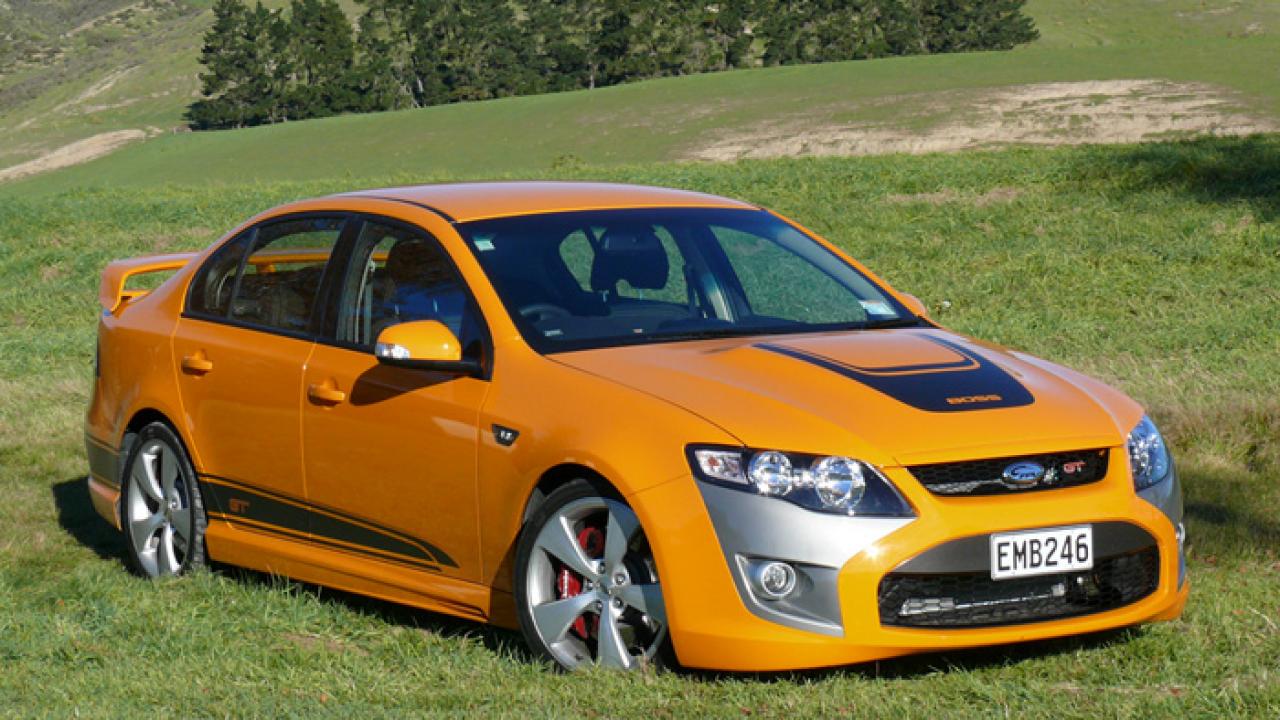How does the saying go? Everything in moderation, including moderation. It's a philosophy obviously adopted by Ford Performance Vehicles (FPV) when they set about tweaking their latest FG Falcon variants.
If you have a penchant for tree-hugging, it might also help keeping that saying in the back of your head while you read this review, because hybrids they ain't.
The FPV range is powered by high performance versions of the Falcon's turbocharged six cylinder and V8 engines, though significant modifications over previous BF model FPV's have resulted in massive power and drivability gains. Output of the 5.4 litre Boss V8 is now 315kW @ 6500 rpm while the turbo six develops 310kw @ 5500 rpm.
The F6 ute offers the entry point to FG FPV motoring at $63,990. You could be looking at an XR6 ute from the 'same 'ol same 'ol rear' ¾ view, but there's no mistaking the FPV distinction up front with those aggressive 'panda eyes' which are common on across all models.
An exposed front-mounted intercooler adds extra muscle on the turbocharged models, but the V8s still get the point across with a substantial bonnet bulge.
For those not wanting to stand-out the GT-E V8 ($78,990) tops the range and offers a more executive colour pallet and supple suspension tuning, sporty 'go-fast' trimmings give way to luxury and comfort items.
Fuel economy you say? On paper, it's as low as 12.1 L/100km for the six-speed auto F6 turbo sedan, the eight manages 14.0 L/100km.
Aerodynamics work against the Ute version and they're slightly less efficient and let's be realistic, when driven anywhere close to what the FPV bad boys are capable of, those figures will be increasingly difficult to realise.
The good news is, despite the output increases, both engines offer a nine and seven percent improvement in economy respectively.
Because of the sporting capabilities the FPV's offer improved safety features as standard over the conventional FG range. A dynamically calibrated Electronic Stability Control is fitted to every model, including the utes, a shame it doesn't feature in the conventional FG utes as it would save even more lives in the volume selling models. Six airbags are become mandatory at FPV level and massive Brembo brakes (4 pot callipers front / single pot rears) provide incredible stopping power.
Inside your cosseted by snug, supportive sport seats that further reiterate the FPV's performance leanings to passer's by, and the smart interior picks up all the fruit you'd expect from the top of the Falcon range, including iPod integration and an affordable, albeit un-intuitive sat-nav option.
But the real story is the engines.
The Boss V8's torque band has been notably improved, this has been done by extending the redline from 6000 to 6500rpm, fitting a low loss air filter, new stainless headers and straight through exhaust, upping compression from 10.5:1 to 10.8:1, increasing the camshaft duration and lift and adding a twin plate throttle that improves air capacity without loss in intake air velocity. i.e.: The engine breaths better than ever before.
Now developing 551Nm of torque at 4750 rpm, the V8 variants have greatly improved get up and go, it still plays second fiddle to HSV's V8 in our opinion but the upgrade is a much welcomed one.
Good news for those who still remember the halcyon days of GT one-two finishes at Bathurst. In Australia V8's make up 71% of FPV's sales mix.
For the younger buyer there's the F6 turbo charged versions which offer a huge 40kW increase over the previous BF FPVs. Make no mistake; if out and out performance is the utmost priority, this is the engine you want.
Not only does its instantaneous thrust obliterate its V8 brother, it outshines the HSV too.
Say what you like about its looks or build quality, the FPV F6 deserves to earn cult status in years to come on its ridiculously rapid acceleration alone. Official figures aren't out yet but a sub 5 second 0-100 km/h time has been targeted, like we said Hybrids they ain't.
The engine is electronically regulated not to develop over 565Nm of torque, so it holds peak torque from just 1950 to 5200 rpm. With more liberal governing the F6 would easily out power the V8, although FPV's General Manager denies limiting the six's output in the name of marketing.
Like the V8, the turbo has better lungs over previous iterations and breaths easier through revised intake plumbing and an uprated Garrett turbo and wastegate assembly.
The cam profiles have more lift and duration than its predecessor, compression has reduced and the intercooler has 22% more volume, this means boost pressure can be increased, the F6 boosts to 0.91 bar (13.3 psi).
The six cylinder is lighter also, so front-end agility is marginally better over the eight. On our brief drive we experienced some steering rattle on some variants, a design feature carried over from the donor FG vehicle, a minor issue when you weigh up the competency of the chassis and suspension package however.
You have to be accepting of indulgence to accept the FPV range; they're big, loud and fast, everything cars for good boys and girls these days shouldn't be. But then, therein lies the attraction.


